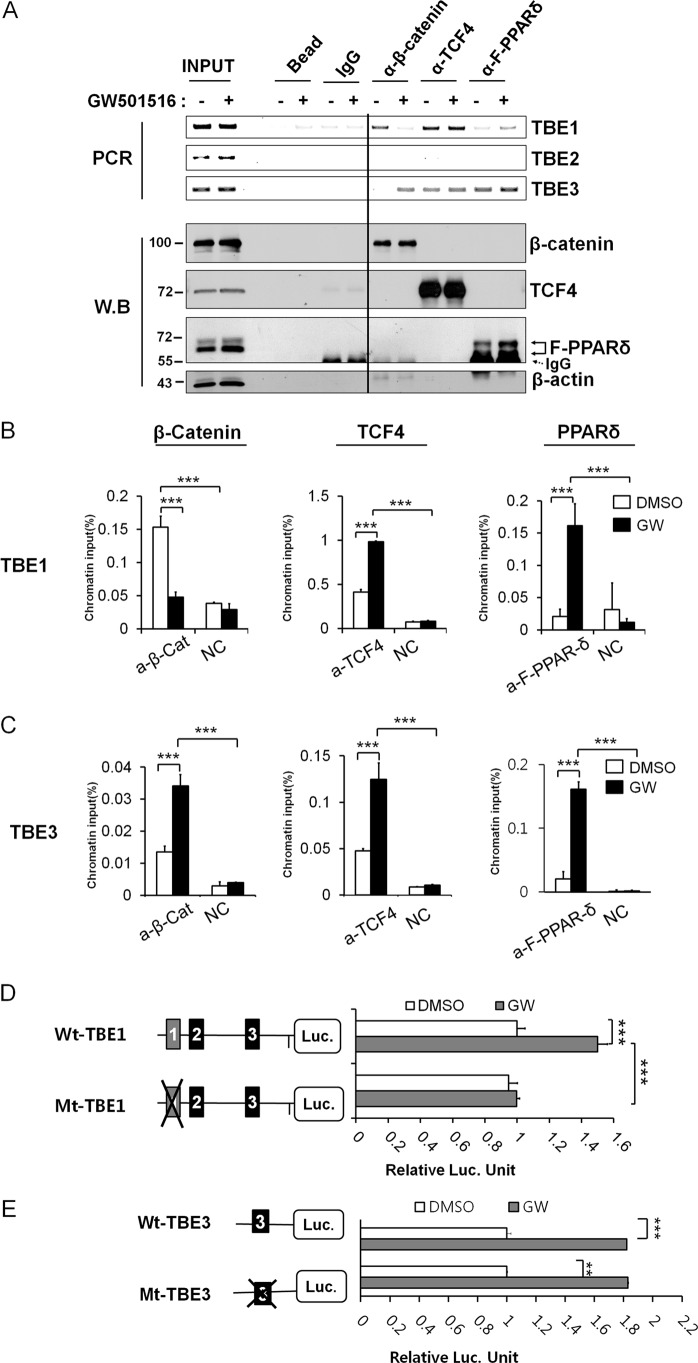FIGURE 2.
Dynamic remodeling of β-catenin, TCF-4, and PPAR-δ bindings on upstream TBEs after GW501516 treatment. A, ChIP for TCF binding element 1 and 3 (TBE1 and TBE3) in the upstream of the VEGFA gene is shown. GW501516 treatment was applied to HCT116 cells as described above, and anti-β-catenin, anti-TCF-4, and anti-FLAG antibodies (for PPAR-δ) were employed. Western blot (W.B) analysis was also performed to confirm the expression of FLAG-PPAR-δ, equal use of the input and immunoprecipitation of each protein. Anti-β-actin antibody was used as a negative control. B, ChIP-qPCR for TBE1 of the VEGFA promoter is shown. GW501516 (GW) treatment was applied to HCT116 cells as described above, and anti-β-catenin, anti-TCF-4, and anti-FLAG antibodies were employed. Three independent analyses were performed; the results represent the average ± S.D. (***, p < 0.005). NC denotes negative control without antibody. C, ChIP-qPCR for TBE3 of the VEGFA promoter is shown. The experiment was performed as in B. Three independent analyses were performed; the results represent the average ± S.D. (***, p < 0.005). D, shown is a luciferase reporter assay with VEGFA natural promoter with wild-type (Wt-TBE1) or mutant TBE1 sites (Mt-TBE1). GW501516 was treated to HCT116 as described above. Three independent experiments were performed; the results represent the average ± S.D. (***, p < 0.005) of relative luciferase activities in comparison to that of DMSO-treated cells. E, shown is a luciferase reporter assay with VEGFA natural promoter containing wild-type (Wt-TBE3) or mutated TBE3 sites (Mt-TBEs). Three independent experiments were performed; the results represent the average ± S.D. (***, p < 0.005) of relative luciferase activities in comparison to that of DMSO-treated cells.

